
1
4th stage
طب مجتمع
Lec-1
د.نهى
8/12/2015
Epidemiology
•
Generally
Epidemiology is a fundamental medical science that focuses on the
distribution and determinants of disease frequency in human
populations.

2
Why does a disease developed in some people and not in others
?
Study of the occurrence and distribution
of health-related
diseases
or
events in specified populations ,and the application of
this knowledge to control the health problem
Objectives
To identify the etiology or the cause of a disease and the risk
factors (factors that increase a person’s risk for a disease)
To determine the extent of disease found in the community
(burden of disease)
To study the natural history and progress of disease
• Objectives
Evaluate both existing and new preventive and therapeutic
measures, and modes of care delivery
To provide the foundation for developing public policy
Epidemiology Practices
• Different types of activities and practices are undertaken in
epidemiology to develop disease control and prevention
measures for groups at risk, which includes;
• Descriptive Epidemiology
• Examining, identifying, and reporting on the frequency
and distribution of disease in a population. Learning the
basic features of its distribution.
• Analytic Epidemiology
• Identifying factors underlying disease or health events.
Testing a hypothesis by studying how exposures relate to
outcomes
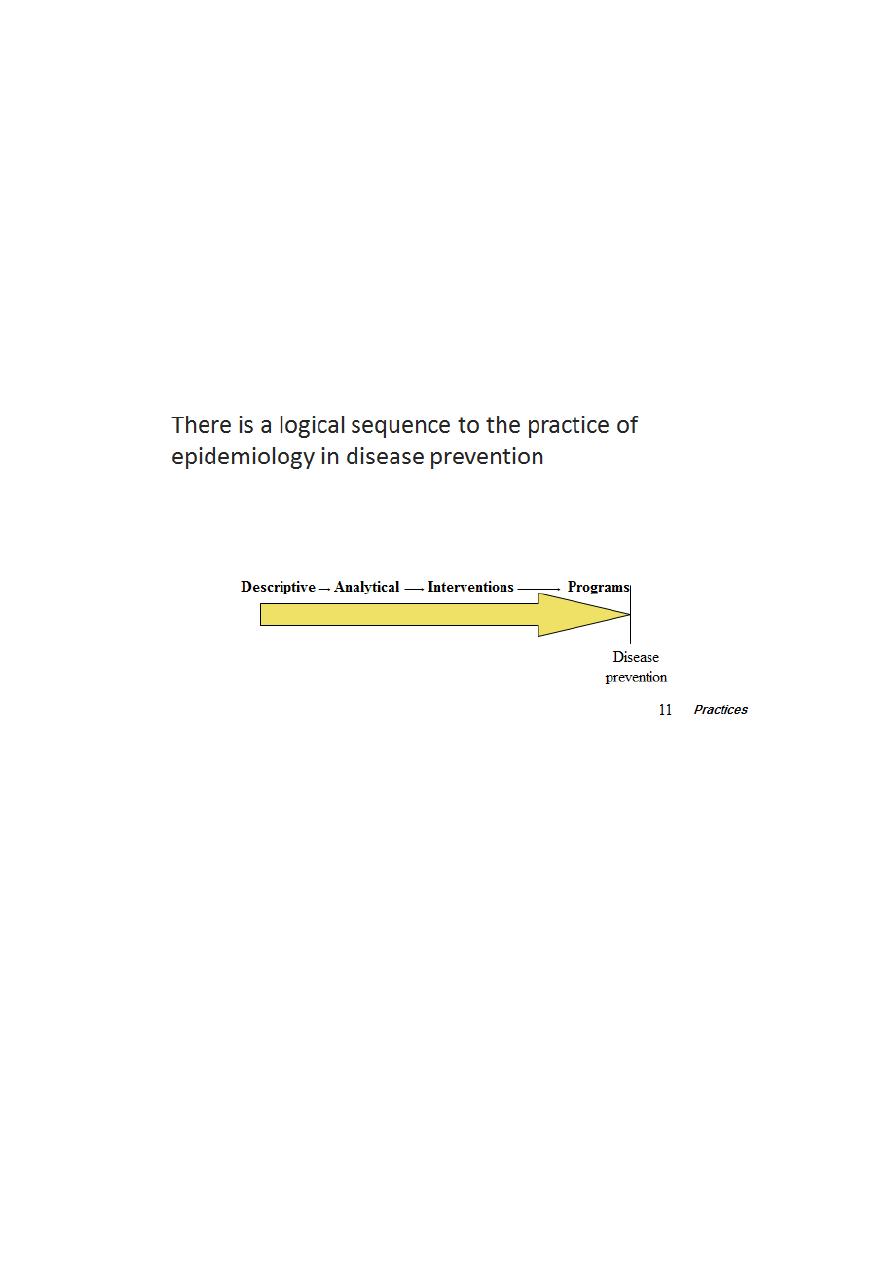
3
• Developing interventions to reduce disease or improve health
in the community
• Using information from analytical studies, develop
strategies centered around an important exposure factor.
Test these strategies with clinical trials.
• Program Evaluation
• Examining the effectiveness of programs for disease
control in the community
Epidemiological Triad
• Epidemiologist have created a model to help explain the
multifaceted phenomena of disease occurrence: the
epidemiological triad

4
•
TIME
• Disease rates change over time. Some of these change occur
regularly and can be predicted.
• By examining events that precede a disease rate increase or
decrease, we may identify causes and appropriate actions to
control or prevent further occurrence of the disease.
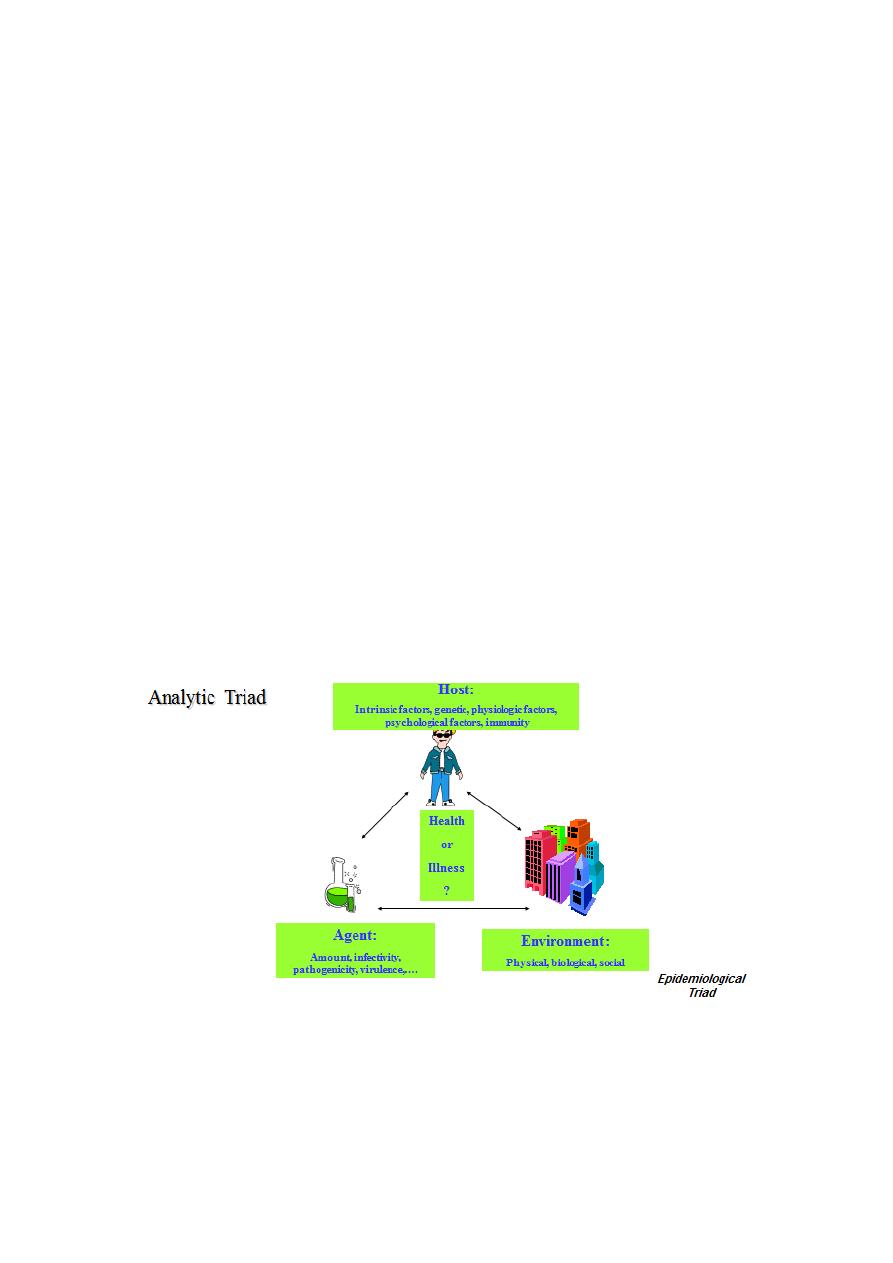
5
• PLACE
• We describe a health event by place to gain insight into the
geographical extent of the problem.
• We may use place of residence, birthplace, place of
employment, school district, hospital unit, etc., depending on
which may be related to the occurrence of the health event.
• PERSON
• There are several person categories available:
• inherent characteristics: age, sex, race
• acquired characteristics: marital status, immune
• activities: occupation, use of medication/tobacco/drugs
• condition under which their live: socioeconomic status,
access to medical care
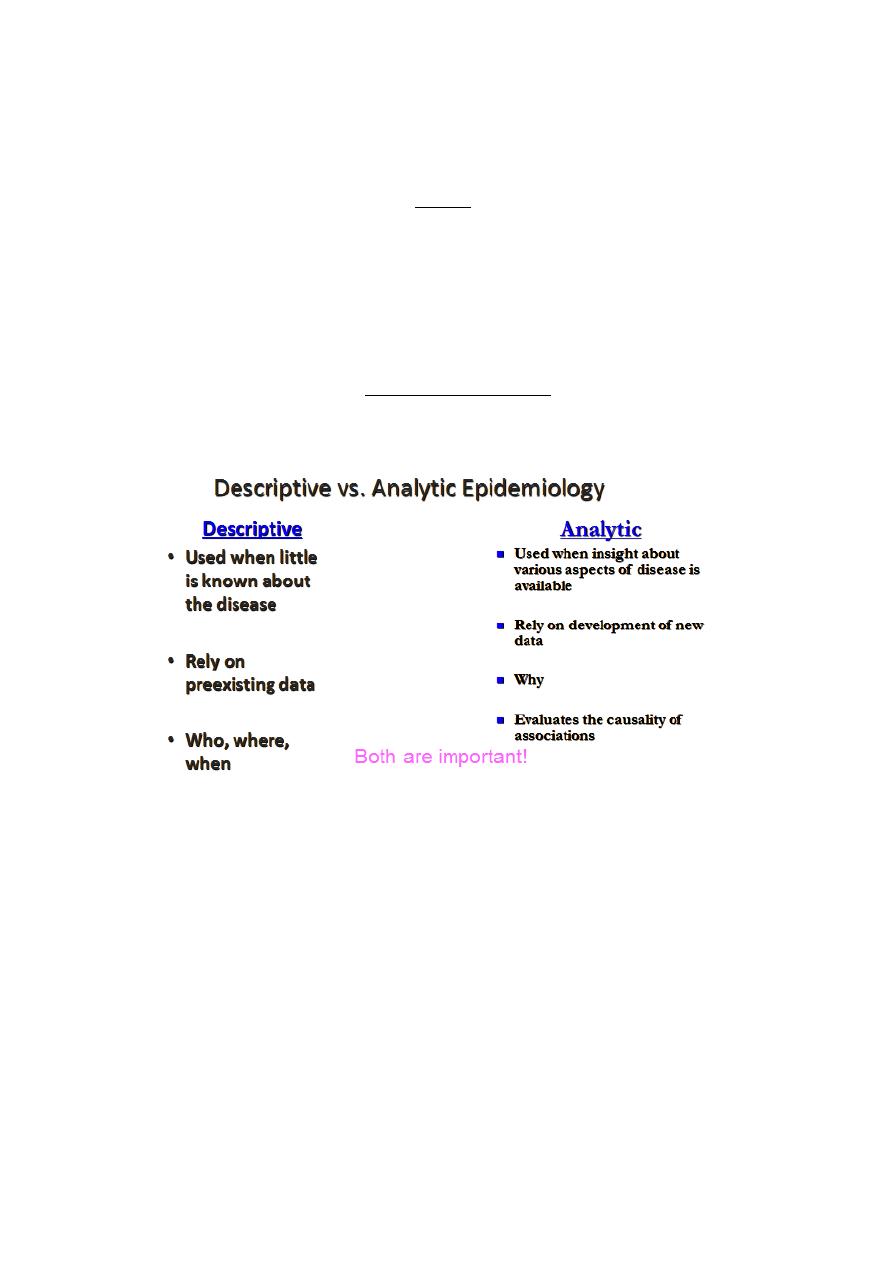
6
• Many diseases rely on an agent or single factor for an
infectious disease to occur.
• Epidemiologist use an ecological view to assess the interaction
of various elements and factors in the environment and
disease-related implications
• When more than a single cause must be present for a disease to
occur, this is called multiple causation
• Descriptive vs. Analytic Epidemiology

7
Case Counts
• Measuring disease or health or health care
frequency starts with counting cases
• Simplest and most frequently gathered measure
in epidemiology
Counts
•
Refers to the number of cases of a disease or
other health phenomenon being studied
i.e.
Number of cases of influenza in
Astana in January 2012
•
Can be useful for allocation of health resources
•
Limited usefulness for epidemiologic purposes without
knowing size of the source population

8
Proportions
Persons included in the numerator are always included in the
denominator:
Proportion: A/ (A+B)
• Indicates the magnitude of a part, related to the total. In
epidemiology, tells us the fraction of the population that is
affected.

9
Ratios
• Like a proportion, is a fraction, BUT without a specified
relationship between the numerator and denominator
• Example: Occurrence of Major Depression
Female cases = 240
240
------------------------
= ---- 2:1 female to male
Male cases = 120
120
Rates
• Rates are a special form of a ratio which represents the
probability of a certain event. The numerator is the number of
occurrences of an event during a time period, and the
denominator is the number of persons exposed to that event in
the time period.
• In other wards it expresses the relative frequency of an event
per unit time (“risk”)
• To be a true rate we must try to have only those at risk in the
denominator. Sometimes this is difficult to do so we use
approximations or use the total population.

11
In epidemiology, the occurrence of a disease or condition can
be measured using rates and proportions. We use these
measures to express the extent of these outcomes in a
community or other population.
Rates tell us how fast the disease is occurring in a population.
Proportions tell us what fraction of the population is affected.
Rates are the basic tool of epidemiologic practice
• Why are rates important?
• because they provide more complete information to describe
or assess the impact of a health issue in a community or
population

11
Overall and specific rates
• The rate can be subdivided by any characteristic of
epidemiological interest eg age, sex ,place and time .
• Such rates are called specific rates, e.g. age or sex specific rates
• Specific rates permit rational and easy comparison of disease
patterns in different places and times for they can be directly
compared with each other
• Why is this not true for overall rates?
Measuring Epidemiologic Outcomes
• Health Outcomes
• Death
• Recovery
• Ongoing Disease
• Stable disease with treatment
• Progressive disease
• disability
• Re-infection, Recurrence
Health outcomes in epidemiology can be expressed through multiple
types of measures
Measurement of Mortality (death)
Measurement of Morbidity (incidence, prevalence)
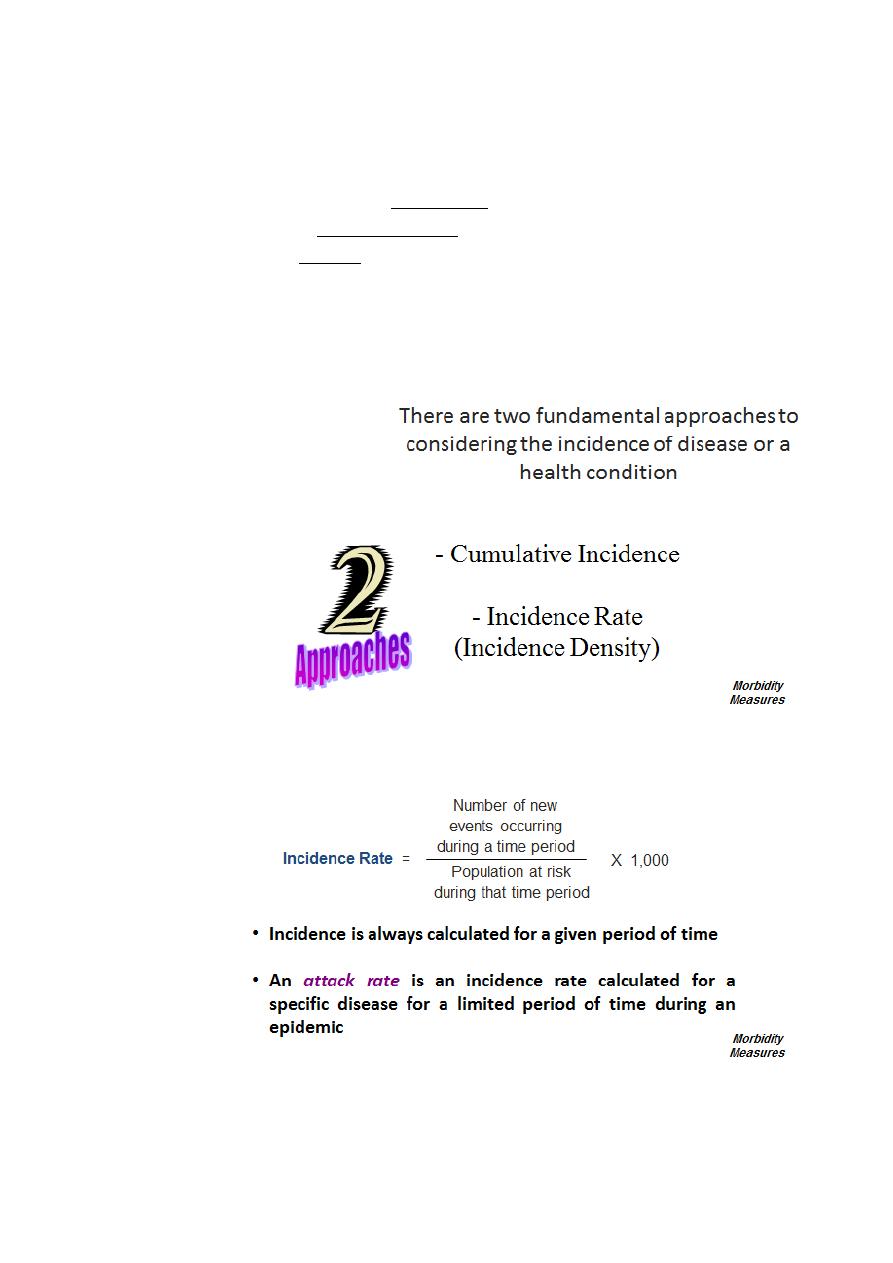
12
Morbidity Measures
Incidence
The development of new cases of a disease that occur
during a specified period of time in previously disease-free or
condition-free (“at risk”) individuals.
•
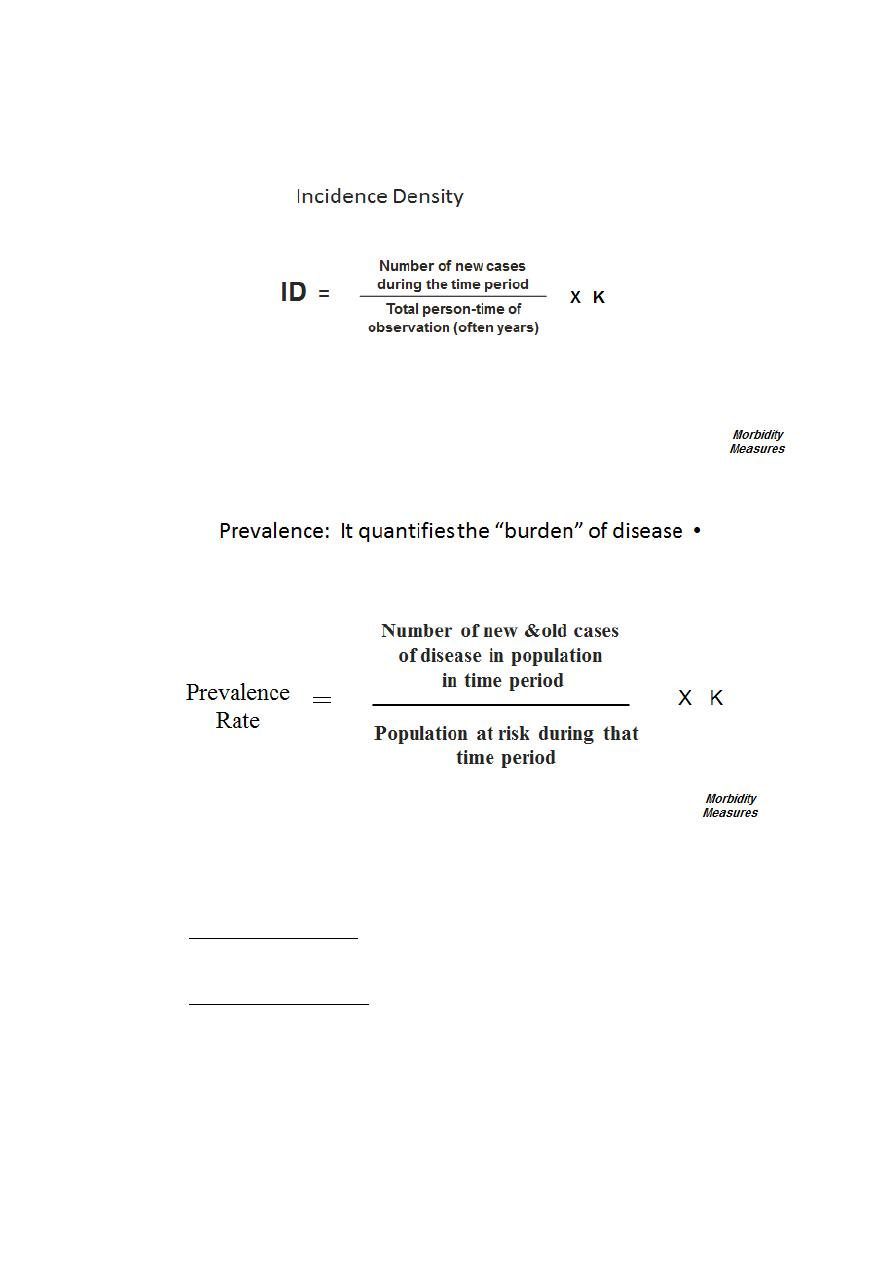
13
•
• Point prevalence measures the frequency of all current
events (old and new) at a given instant in time
• Period prevalence measures the frequency of all current
events (old and new) for a prescribed period of time
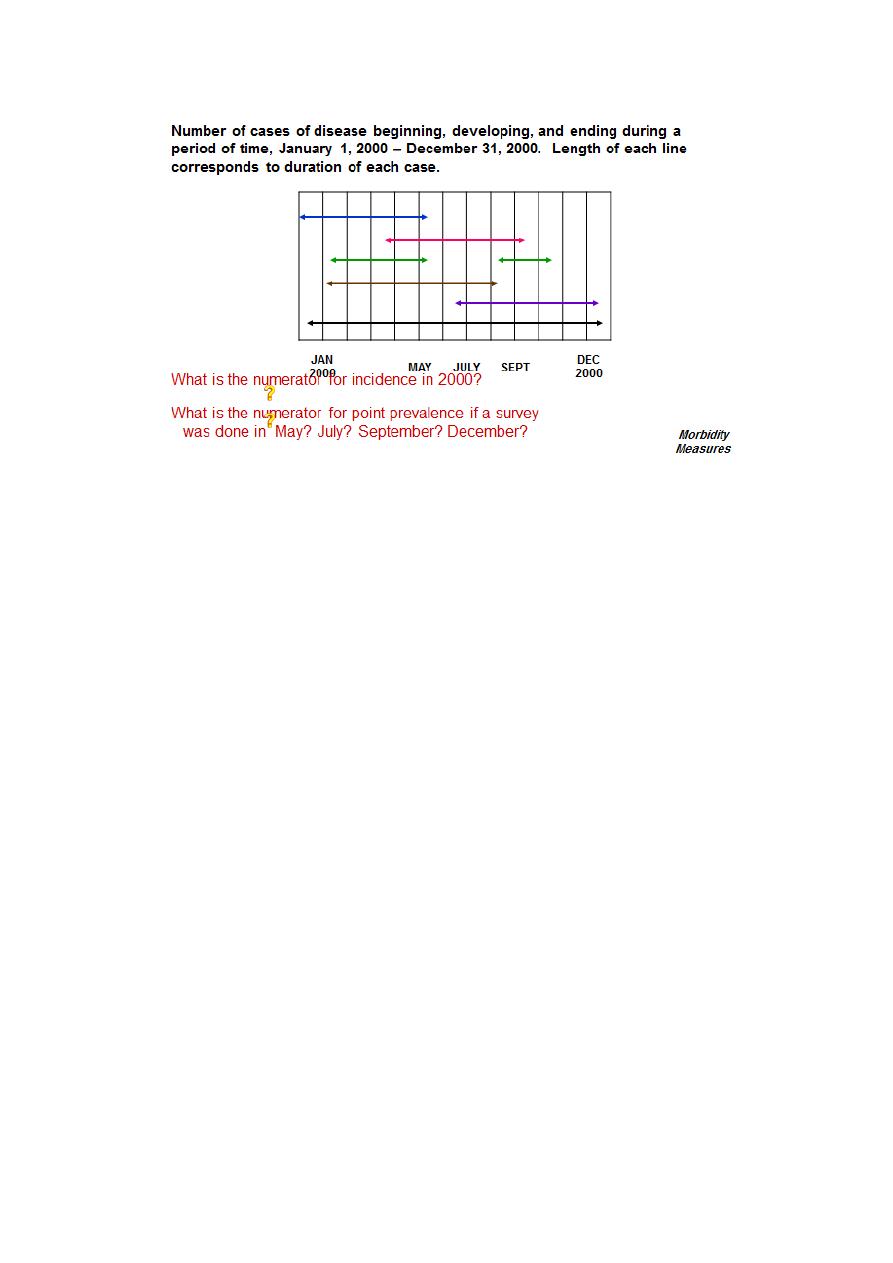
14
Prevalence
and incidence
• In fixed populations ,
the prevalence is equal to the incidence rate x average duration
of disease
In a dynamic population, however, the prevalence of a disease
cannot be predicted from knowledge of the incidence (or vice
versa )because of migration into and out of the population,
deaths, changing disease rates, changes in prognosis and error
in measuring the incidence (or prevalence) accurately .
• In practice ,either the prevalence and incidence are both
measured or a choice of one is made .

15
